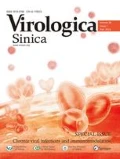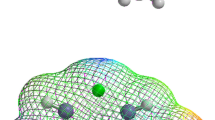Abstract
Owing to the widespread distribution of mosquitoes capable of transmitting Zika virus, lack of clinical vaccines and treatments, and poor immunity of populations to new infectious diseases, Zika virus has become a global public health concern. Recent studies have found that Zika virus can continuously infect human brain microvascular endothelial cells. These cells are the primary components of the blood–brain barrier of the cerebral cortex, and further infection of brain tissue may cause severe damage such as encephalitis and fetal pituitary disease. The present study found that a biologically active base, piperlongumine (PL), inhibited Zika virus replication in human brain microvascular endothelial cells, Vero cells, and human umbilical vein endothelial cells. PL also significantly increased heme oxygenase-1 (HO-1) gene expression, while silencing HO-1 expression and using the reactive oxygen species scavenger, N-acetylcysteine, attenuated the inhibitory effect of PL on Zika virus replication. These results suggest that PL induces oxidative stress in cells by increasing reactive oxygen species. This, in turn, induces an increase in HO-1 expression, thereby inhibiting Zika virus replication. These findings provide novel clues for drug research on the prevention and treatment of Zika virus.




Similar content being viewed by others
References
Applegate LA, Luscher P, Tyrrell RM (1991) Induction of heme oxygenase: a general response to oxidant stress in cultured mammalian cells. Can Res 51:974–978
Bergelson JM (2009) Intercellular junctional proteins as receptors and barriers to virus infection and spread. Cell Host Microbe 5:517–521
Bezerra DP, Militao GC, de Castro FO, Pessoa C, de Moraes MO, Silveira ER, Lima MA, Elmiro FJ, Costa-Lotufo LV (2007) Piplartine induces inhibition of leukemia cell proliferation triggering both apoptosis and necrosis pathways. Toxicol In vitro 21:1–8
Bezerra DP, Pessoa C, de Moraes MO, Saker-Neto N, Silveira ER, Costa-Lotufo LV (2013) Overview of the therapeutic potential of piplartine (piperlongumine). Eur J Pharm Sci 48:453–463
Boll PM, Hansen J, Simonsen O (1984) Synthesis and molecular structure of piplartine (=piperlongumine). Tetrahedron 40:171–175
Chen Y, Liu JM, Xiong XX, Qiu XY, Pan F, Liu D, Lan SJ, Jin S, Yu SB, Chen XQ (2015) Piperlongumine selectively kills hepatocellular carcinoma cells and preferentially inhibits their invasion via ROS-ER-MAPKs-CHOP. Oncotarget 6:6406–6421
Chen J, Yang YF, Yang Y, Zou P, Chen J, He Y, Shui SL, Cui YR, Bai R, Liang YJ, Hu Y, Jiang B, Lu L, Zhang X (2018) AXL promotes Zika virus infection in astrocytes by antagonizing type I interferon signalling. Nat Microbiol 3:302–309
Chen WC, Tseng CK, Lin CK, Wang SN, Wang WH, Hsu SH, Wu YH, Hung LC, Chen YH, Lee JC (2018) Lucidone suppresses dengue viral replication through the induction of heme oxygenase-1. Virulence 9:588–603
Devadas K, Dhawan S (2006) Hemin activation ameliorates HIV-1 infection via heme oxygenase-1 induction. J Immunol 176:4252–4257
Dick GWA (1952) Zika virus. II pathogenicity and physical properties. Trans R Soc Trop Med Hyg 46:521–534
Duan C, Zhang B, Deng C, Cao Y, Zhou F, Wu L, Chen M, Shen S, Xu G, Zhang S, Duan G, Yan H, Zou X (2016) Piperlongumine induces gastric cancer cell apoptosis and G2/M cell cycle arrest both in vitro and invivo. Tumour Biol 37:10793–10804
Duffy MR, Chen T-H, Hancock WT, Powers AM, Kool JL, Lanciotti RS, Pretrick M, Marfel M, Holzbauer S, Dubray C, Guillaumot L, Griggs A, Bel M, Lambert AJ, Laven J, Kosoy O, Panella A, Biggerstaff BJ, Fischer M, Hayes EB (2009) Zika virus outbreak on Yap Island, Federated States of Micronesia. N Engl J Med 360:2536–2543
Eigenmann DE, Xue G, Kwang SK, Moses AV, Hamburger M, Oufir M (2013) Comparative study of four immortalized human brain capillary endothelial cell lines, hCMEC/D3, hBMEC, TY10, and BB19, and optimization of culture conditions, for an in vitro blood–brain barrier model for drug permeability studies. Fluids Barriers CNS 10:33
El Kalamouni C, Frumence E, Bos S, Turpin J, Nativel B, Harrabi W, Wilkinson DA, Meilhac O, Gadea G, Despres P, Krejbich-Trotot P, Viranaicken W (2018) Subversion of the heme oxygenase-1 antiviral activity by Zika virus. Viruses 11:2
Fauci AS, Morens DM (2016) Zika virus in the Americas—yet another arbovirus threat. N Engl J Med 374:601–604
Goasdoué K, Miller SM, Colditz PB, Björkman ST (2017) Review: the blood-brain barrier; protecting the developing fetal brain. Placenta 54:111–116
Greenwood J, Heasman SJ, Alvarez JI, Prat A, Lyck R, Engelhardt B (2011) Review: leucocyte-endothelial cell crosstalk at the blood-brain barrier: a prerequisite for successful immune cell entry to the brain. Neuropathol Appl Neurobiol 37:24–39
Gu SM, Yun J, Son DJ, Kim HY, Nam KT, Kim HD, Choi MG, Choi JS, Kim YM, Han SB, Hong JT (2017) Piperlongumine attenuates experimental autoimmune encephalomyelitis through inhibition of NF-kappaB activity. Free Radic Biol Med 103:133–145
Haddow AD, Schuh AJ, Yasuda CY, Kasper MR, Heang V, Huy R, Guzman H, Tesh RB, Weaver SC (2012) Genetic characterization of Zika virus strains: geographic expansion of the Asian lineage. PLoS Negl Trop Dis 6:e1477
Hamel R, Dejarnac O, Wichit S, Ekchariyawat P, Neyret A, Luplertlop N, Perera-Lecoin M, Surasombatpattana P, Talignani L, Thomas F, Cao-Lormeau VM, Choumet V, Briant L, Despres P, Amara A, Yssel H, Misse D (2015) Biology of Zika virus infection in human skin cells. J Virol 89:8880–8896
Hill-Batorski L, Halfmann P, Neumann G, Kawaoka Y (2013) The cytoprotective enzyme heme oxygenase-1 suppresses Ebola virus replication. J Virol 87:13795–13802
Huang H, Falgout B, Takeda K, Yamada KM, Dhawan S (2017) Nrf2-dependent induction of innate host defense via heme oxygenase-1 inhibits Zika virus replication. Virology 503:1–5
Itoh K, Wakabayashi N, Katoh Y, Ishii T, Igarashi K, Engel JD, Yamamoto M (1999) Keap1 represses nuclear activation of antioxidant responsive elements by Nrf2 through binding to the amino-terminal Neh2 domain. Genes Dev 13:76–86
Lehmann E, El-Tantawy WH, Ocker M, Bartenschlager R, Lohmann V, Hashemolhosseini S, Tiegs G, Sass G (2010) The heme oxygenase 1 product biliverdin interferes with hepatitis C virus replication by increasing antiviral interferon response. Hepatology 51:398–404
Loboda A, Damulewicz M, Pyza E, Jozkowicz A, Dulak J (2016) Role of Nrf2/HO-1 system in development, oxidative stress response and diseases: an evolutionarily conserved mechanism. Cell Mol Life Sci 73:3221–3247
Maines MD (1988) Heme oxygenase: function, multiplicity, regulatory mechanisms, and clinical applications. Faseb J 2:2557–2568
Nowakowski TJ, Pollen AA, Di Lullo E, Sandoval-Espinosa C, Bershteyn M, Kriegstein AR (2016) Expression analysis highlights AXL as a candidate Zika virus entry receptor in neural stem cells. Cell Stem Cell 18:591–596
Protzer U, Seyfried S, Quasdorff M, Sass G, Svorcova M, Webb D, Bohne F, Hösel M, Schirmacher P, Tiegs G (2007) Antiviral activity and hepatoprotection by heme oxygenase-1 in hepatitis B virus infection. Gastroenterology 133:1156–1165
Raimotenhunen T, Marver HS, Schmid R (1968) The enzymatic conversion of heme to bilirubin by microsomal heme oxygenase. Proc Natl Acad Sci USA 61:748–755
Raj L, Ide T, Gurkar AU, Foley M, Schenone M, Li X, Tolliday NJ, Golub TR, Carr SA, Shamji AF, Stern AM, Mandinova A, Schreiber SL, Lee SW (2011) Selective killing of cancer cells by a small molecule targeting the stress response to ROS. Nature 475:231–234
Tabata T, Petitt M, Puerta-Guardo H, Michlmayr D, Wang C, Fang-Hoover J, Harris E, Pereira L (2016) Zika virus targets different primary human placental cells, suggesting two routes for vertical transmission. Cell Host Microbe 20:155–166
Tang EI, Mruk DD, Lee WM, Cheng CY (2015) Cell–cell interactions, cell polarity, and the blood-testis barrier. In: Ebnet K (ed) Cell polarity 1: biological role and basic mechanisms. Springer, Cham, pp 303–326
Acknowlegdements
We are grateful for Changwen Ke of the Disease Control and Prevention, Guangdong, China, for Zika virus Z16006. This work was supported by the National Natural Science Foundation (Nos. 31670168, 31470271 and 81730110), National Key R&D Program of China (Grant No. 2018YFC1602206) and Guangdong Provincial Science and Technology (No. 2018B020207006).
Author information
Authors and Affiliations
Contributions
BZ and WZ conceptualized the study. WL, LS, and JG did formal analysis. WL and JG did investigation. BZ provided methodology. HZ, YH, and JC provided visualization. WL and JG drafted the manuscript. BZ, WZ, CW, and XW supervised the study. All authors read and approved the final version of the manuscript.
Corresponding authors
Ethics declarations
Conflicts of interest
The authors declare no conflict of interest.
Animal and Human Rights Statement
This article does not contain any studies with human or animal subjects performed by any of the authors.
Electronic supplementary material
Below is the link to the electronic supplementary material.
Rights and permissions
About this article
Cite this article
Lu, W., Shi, L., Gao, J. et al. Piperlongumine Inhibits Zika Virus Replication In vitro and Promotes Up-Regulation of HO-1 Expression, Suggesting An Implication of Oxidative Stress. Virol. Sin. 36, 510–520 (2021). https://doi.org/10.1007/s12250-020-00310-6
Received:
Accepted:
Published:
Issue Date:
DOI: https://doi.org/10.1007/s12250-020-00310-6




